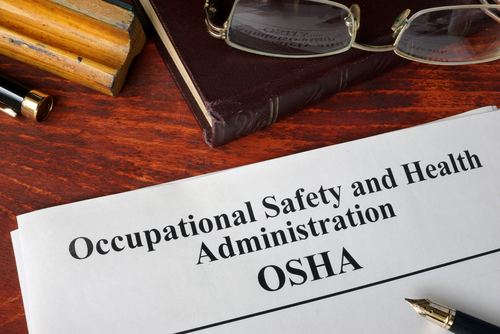While many people think keeping facilities safe is solely dependent on security access control measures like biometrics, keycards, and other electronic locks, nothing could be further from the truth.

Lesley Groff, Senior Supervisor of Buildings and Grounds at UGI Utilities Inc., recently spoke during the Facilities Management Advisor webinar “The Facility Manager’s Role in Maintaining a Safe Workplace,” sponsored by Avetta.
Groff encouraged facilities professionals to visit OSHA.gov to read, understand, and follow Occupational Safety and Health Administration (OSHA) regulations.
“Many of these regulations have been put in place because people were hurt. [OSHA] is working to try to keep our employees safer by giving us guidelines: do’s and don’ts that we may not know. They have a huge job; we want to be respectful,” Groff said.
Specifically, she noted that of the top 10 most frequently cited OSHA violations in 2021, five affect the construction industry, and the other five are general industry issues that can be found at corporate headquarters facilities. General industry violations include:
- Respiratory protection: #2
- Hazard communications: #4
- Control of hazardous energy—lockout/tagout (LOTO): #7
- Powered industrial trucks: #9
- Machinery and machine guarding: #10
LOTO means putting up warning notices and disabling machines and equipment that aren’t working properly and that could injure workers in a facility. It also requires putting proper information about new equipment into the facility’s computer system.
Facilities Managers with Safety Teams
Facilities management groups that have separate environmental, health, and safety (EHS) departments should work together on larger issues. While EHS might govern policies, facilities managers would still own daily facility tasks. It’s especially challenging for facilities managers who are taking care of multiple buildings.
Facilities Managers without Safety Teams
Facilities managers without an independent EHS department should consult with insurance providers and consultants for assistance in keeping their facility safe, as well as by attending educational sessions. Be sure to also prioritize tasks and create a plan to stay current with changes in regulations.
Steps to Increase Safety at Your Facility
Groff encourages facilities managers to follow these steps to increase facility safety:
Step 1: Develop a written plan. It should include a number of compliance issues such as stormwater, radiation, asbestos, ladder safety, man lifts, and emergency planning. Be sure it considers what the first priority should be: preventing the loss of life. Also, conduct internal audits.
Step 2: Create signage. Base signs on advice from other companies’ facilities professionals, who could provide a template.
Step 3: Train. Provide training opportunities so facilities professionals become knowledgeable about compliance issues.
Step 4: Review. Look at the results of those audits and make changes to the facility’s safety protocol.
Dealing with Audits
Whether they’re scheduled or a surprise, audits occur, and Groff explains that “the difference between calm and chaos is if you are prepared or not.”
When inspectors come, be sure to have a plan that includes the following:
- Have a lobby representative call a facility manager administrator. Then, that person can notify everyone else on the call list.
- Bring inspectors to a conference room so personnel can meet with them before the facility inspection starts.
- Don’t give inspectors more information than they need unless they ask for it.
- Be honest with inspectors.
“They are just doing their jobs. It’s much easier if we can do it and understand they are coming from a place of trying to make us better,” Groff said.
Learn More
To learn more, check out the entire “The Facility Manager’s Role in Maintaining a Safe Workplace” webinar for free on demand by clicking here.
ALSO READ: Faces of Facilities: Lesley Groff from UGI Utilities Inc.
